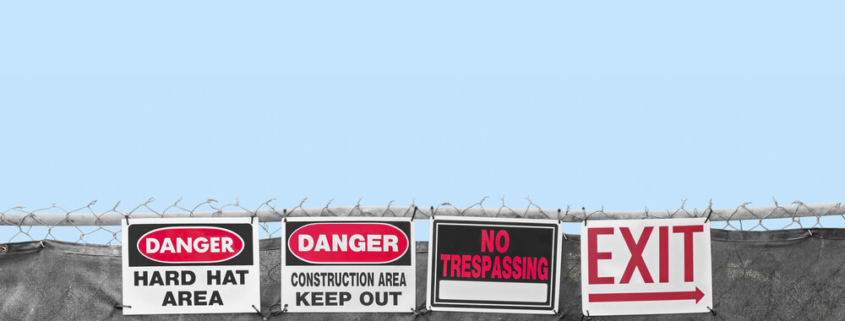Common Hazards at Construction Worksites
While modern-day construction sites may be places of incredible innovation and industry, construction sites can also be very dangerous. The rate of injury within the construction industry is higher than it is for most other industries, and, unfortunately, private construction industry fatalities appear to be increasing. For construction workers, contractors, property managers, and site managers, understanding the common hazards at a construction site is the first step in mitigating injuries. Consider these common construction worksite hazards, and call OSHA Injury Attorney if you or a loved one has been harmed on the job.
Moving Objects, Equipment, Machinery, and Vehicles
On a construction site, anything that moves can be a hazard. This includes vehicles, machinery, equipment, tools, cement mixers, and even unstable foundations. Transportation-related accidents are a leading cause of death in the private construction industry, and caught-in/between accidents are also one of the construction industry’s fatal four–one of the top four causes of fatal injury. Remaining vigilant of surroundings and keeping a safe distance from moving objects is critical. Additionally, it is important that equipment and machinery are regularly inspected and maintained to ensure that it is performing as expected. Of course, operating any moving equipment, machinery, or motor vehicles with proper training is also key.
Heights
Falls are another one of the “fatal four”; working at height can be incredibly dangerous for workers. Fortunately, there are regulatory safeguards in place that are designed to reduce fall risk, including scaffolding, training, and harness requirements. When these regulations are breached, workers are at risk.
Slip and Fall Hazards
It’s not just falls from heights that can be dangerous (and deadly), but also falls that occur at ground level, too. If a construction worker slips and falls on the job, they could suffer a traumatic brain injury, back or neck injury, spinal cord injury, bone fracture injury, internal injury, soft tissue injury, and more. Slip and fall hazards on construction sites are numerous and include uneven walking surfaces, objects in walking areas, poor lighting, wet or contaminated surfaces, and varying terrain.
Electricity
Like falls from heights and caught-in/between accidents involving machinery, electrocution is another one of the top killers of construction industry workers. Of course, being around exposed electrical wiring is inherent to being a construction worker, where most buildings and homes are unfinished. With that in mind, no one other than trained electricians should be actually working with electricity and, even then, adherence to safety guidelines is critical. Most electricity accidents and injuries that happen on construction sites could be prevented with better training, ensuring that wires are not unnecessarily exposed, avoiding using electricity-conducting tools in high-voltage areas, and always following OSHA regulations.
Excessive Noise
While many of the above hazards will result in physical injuries that are visible, such as broken bones, lacerations, amputation injuries, etc., the loss of hearing is not visible but is equally as severe. With the use of high-powered tools and machinery, demolition, and more, loud noises are built-in to a construction site. Sadly, about 51 percent of workers in the construction industry have been exposed to hazardous noise, 31 percent of noise-exposed construction-industry workers report not using adequate hearing protection, and about 14 percent of all construction workers have a hearing difficulty. Using proper hearing protection can greatly reduce the risk of a hearing injury.
Trenches
Trenches are narrow excavations in the ground that are typically deeper than they are wide. Trenching is a very important construction activity, usually relevant to new construction and repair projects. While often very necessary, trenches can be deadly, and trench collapses are a cause of injury and death. In order to avoid trench collapses, proper measures need to be taken in advance of trench construction, including site inspection. During trench construction, the process should be overseen by managers who regularly inspect the work and the safety of the trench. All those who are working around trenches should be properly trained and properly equipped with safety gear.
Contact OSHA Injury Attorney Today
At OSHA Injury Attorney, we seek to provide workers with the information that they need about their rights, OSHA regulations, and how to stay safe on a construction site. If you want to learn more about common construction site hazards or your rights if you’re injured on a construction site, we can help. To connect with OSHA Injury Attorney directly for a free consultation, send us a message through our online contact form at your convenience. We are here to support you.


 Musculoskeletal Disorders
Musculoskeletal Disorders

Leave a Reply
Want to join the discussion?Feel free to contribute!